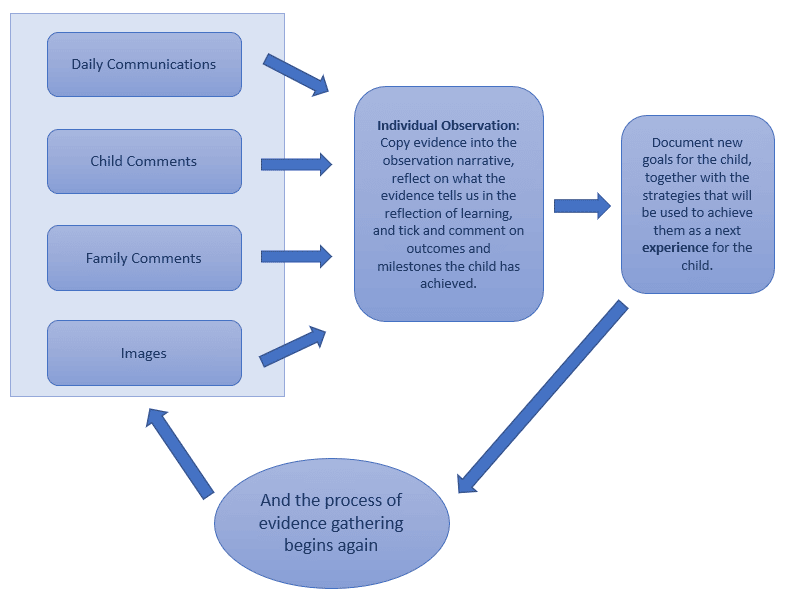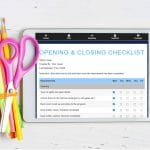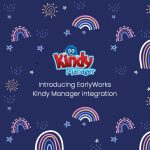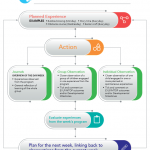Do I have to create whole new observation every time I notice something?
If we were to think about one of the children in our care, it’s likely all we know about that child has come from a variety of sources. We might have learnt about the child’s culture through conversations with the child’s family. We might have learnt about their skills and abilities from observing the child engage in planned and unplanned experiences. We might have learnt about their strengths, interests and current knowledge through talking to the child during lunch, or while watering the veggie patch, or while chatting during a nappy change. Let’s be honest, we never know when a child is going to reveal something we didn’t know. And that’s what makes our work such a delight!
So our knowledge of each child doesn’t just happen when we want it to, in one observation at one point in time. Our knowledge is gathered over an extended period of time in a variety of contexts.
This takes us back to our original question: Do I need to create a whole new observation every time I notice something? Using EarlyWorks you don’t have to create a brand new observation every time a child reveals something new about themselves. You can record these little pieces of evidence in a variety of places.
- Individual notes in Daily Communications – the ideal place to record children’s food preferences, progress with independence in feeding, notes from lunchtime conversations, or observations from children’s sleep time preferences and routines. Basically anything interesting we discover during eating, sleeping/resting, or toileting
- Child Comments – the place to record quick jottings that tell us more about each child (strengths, needs, knowledge, interests, and skills).
- Family Comments – comments from families can be incredibly valuable in helping us better understand each child.
- As images attached to observations, journals, child comments, or simply saved as a standalone image. Some observations need to be seen😊
When we are ready to create an individual observation of a child these valuable anecdotes can be copied into the observation narrative. You will be surprised at what you will learn about each child when these jottings are put together.
You might discover patterns, for example, some children might be fixers, always intervening and helping other children complete tasks, while others might rely on other children to do things for them whenever they are challenged. You might notice some children learn by copying other children, while others learn by experimenting and fearlessly exploring what happens when lids are banged together or dropped from great heights.
These individual observations can then be used to inform where we go next with each child as they participate in the program. For some children you might plan to resist jumping in and fixing ‘problems’ and instead provide just enough help for the child to complete a task independently. For example, loosen the lid so the child can unscrew it themselves.
So we might be collecting information from different places at different times, but it can all be collected, viewed and collated into one or many observations in EarlyWorks.
For those of us who are visual thinkers, here is a diagram:-)

I know there is one question I have managed to avoid, and believe me, we get asked this question a lot! How often do we need to be creating individual observations of each child? Well…that is a decision to be made by each service. The timing will likely be impacted by attendance with those children attending full time likely to have more frequent individual observations than those attending less frequently. Remember your observations are there to support you in supporting the children, so if your documentation is achieving that goal, then it’s likely you have the timing right already.







